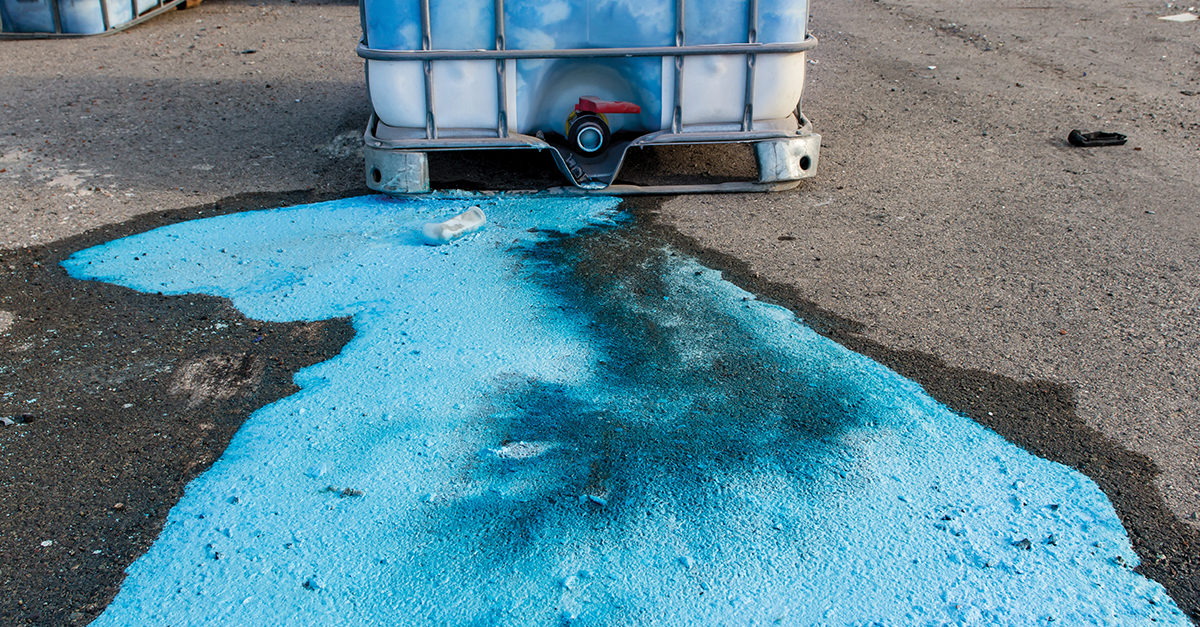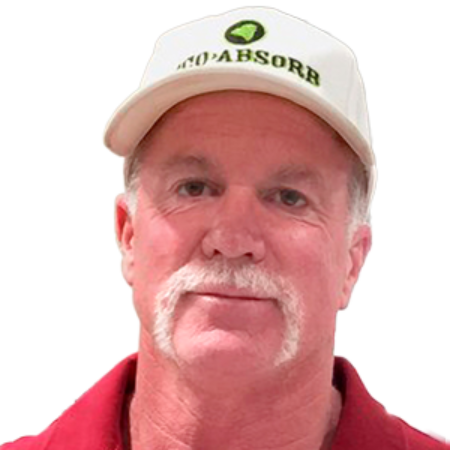In manufacturing plants, warehouses, and distribution centers, spills may occur when liquid substances, such as solvents, chemical additives, lubricants, and cleansers, are transferred from large drums into smaller containers or machinery, as well as moved on/off trucks and around the warehouse. These spills can contribute to slips and falls, one of the leading causes of industrial accidents, according to the U.S. Department of Labor’s Occupational and Health Administration (OSHA).
Cleaning up such messes traditionally involves using clay-based absorbents or a mop and bucket, but these methods do an unsatisfactory job. Not only is clay heavy, but it is very dusty when dry and the airborne dust can be dangerous, even cancer-causing, if inhaled. Clay absorbents can also leave a hard-to-remove residue that must be scrubbed clean, but this may leave slippery wet spots behind.
While any spill poses a danger and disrupts workflow, industrial-strength chemicals and strong acids and bases must be quickly cleaned up and neutralized to prevent potential injury. However, with the multitude of liquid substances plants and warehouses use and store, workers may not always be fully aware if the spill is hazardous.
Danger No. 1: Dusty Absorbents
Commonly used cleaning absorbents, such as clay or diatomaceous earth, are extremely dusty in their natural form, and can be hazardous when inhaled. While water can be added to reduce dust, as soon as the water evaporates (when a package is left open for instance), the absorbents return to their original state.
Many absorbents contain crystalline silica, which is listed by the World Health Organization as a Group 1 carcinogen, the same category as asbestos. If inhaled, crystalline silica can also cause silicosis, a debilitating and sometimes fatal lung disease. OSHA recommends “replacing crystalline silica materials with safer substitutes, whenever possible.” As a solution, a growing number of industrial managers are turning to dustless alternatives.
Danger No. 2: Slippery Residue
To protect workers from slip-and-fall accidents, which can be costly and carry some liability, safety and production managers need to use a spill cleanup product that does not leave water or an unsafe residue behind. Floors left wet from mopping remain a slip-and-fall hazard until completely dry.
To address these concerns, innovations in spill management technology have eliminated the need to add water to some products, reducing the risk of slip-and-fall liability. Instead, the absorbents can be applied dry, acting like a sponge by absorbing and binding to the spilled chemicals. This makes it easy to sweep up the substance along with the absorbent into a dustpan, and then dispose of both in a proper solid waste receptacle.

Danger No. 3: Chemical Hazards
In industrial facilities, dangerous spills can involve common acids such as sulfuric acid (used to make batteries, chemicals, and fertilizers, and to refine oil and reduce corrosion) and bases such as sodium hydroxide (used in the production of oil, paper, and soap).
To promote safety when a spilled substance is unknown, some products indicate if a substance is hazardous or reveal a substance’s pH level by changing color. This is important to prevent accidental exposure and injury.
Color coding is a tactic used across the cleaning industry to promote safety across a variety of tasks, from injury to cross-contamination prevention. Products intended to help with hazardous waste cleanup may turn red for dangerous acids and blue for dangerous bases. When the harmful substance is neutralized, it may change back to its original, natural beige color, indicating that it is safe for disposal. This can help to protect workers from injury and company managers or owners from liability.
Danger No. 4: Heavy Lifting
Another issue with absorbents is that they are heavy. Because such products have relatively low absorption-to-weight ratios, a lot of product must be used to clean up spills of any size. This can create storage issues in facilities where every square inch of space must be efficiently used.
Workers could easily injure themselves handling 50-pound bags of clay or diatomaceous earth to clean up a spill. This is another potential worker’s compensation or liability risk. The weight and quantity of absorbent is also an issue when it comes to disposing of it after the spill cleanup.
To address such issues, look for innovative absorbents that pack more absorption power in a lower weight. This makes bags of product safer and easier to handle, as well as less costly for disposal since such fees are usually based on weight.
Keep Employees Safe
Health and safety is a top recurring issue among CMM readers. By implementing safer cleanup options in industrial and other types of facilities, employees will remain safer, and plant and distribution centers more productive. A cleaner factory floor will also help these facilities pass required inspections, as well as impress customers.



